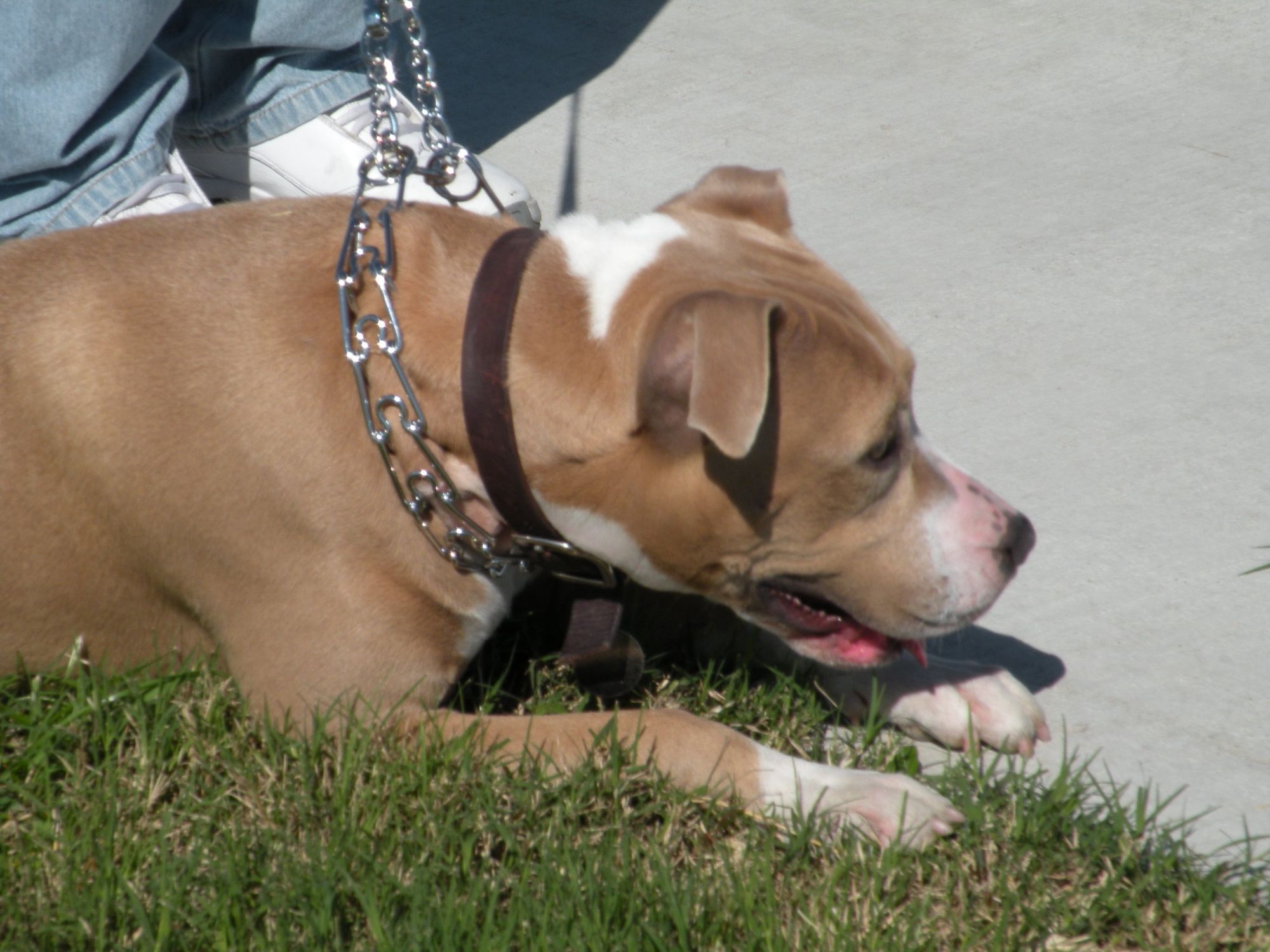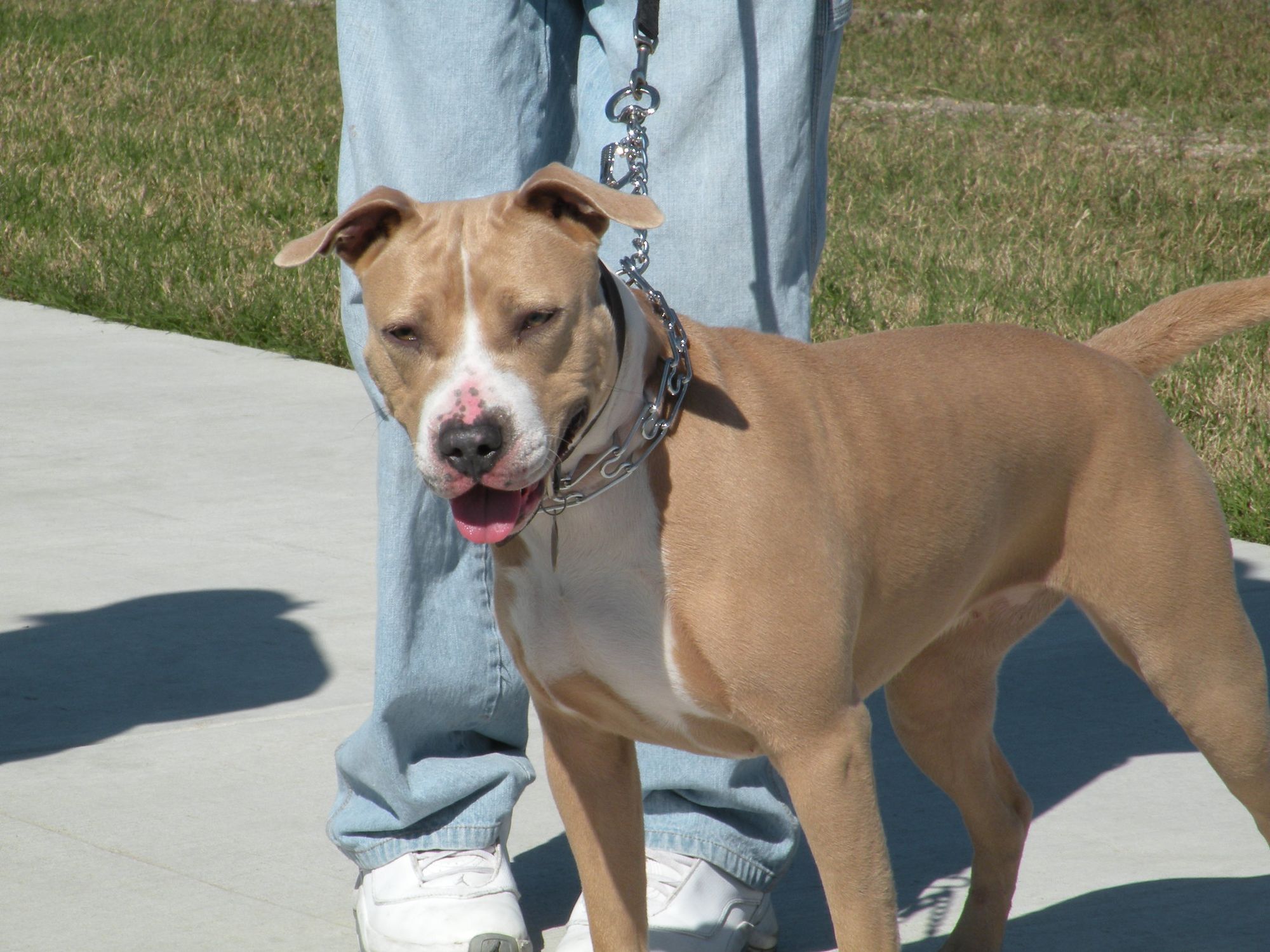The Blue Fawn Pitbull is a captivating breed known for its striking appearance and affectionate nature. In this article, we will explore the history, characteristics, and care requirements, and debunk common myths surrounding this fascinating dog breed. Whether you're considering adding a Blue Fawn Pitbull to your family or simply curious about these remarkable canines, this article will provide you with valuable insights.
The Blue Fawn Pitbull traces its lineage back to the American Pit Bull Terrier, a breed that originated in the United States. The Blue Fawn variation is a result of selective breeding, focusing on specific coat colors and patterns. Breeders sought to develop a unique coloration that would stand out while maintaining the Pitbull's distinctive traits.

Characteristics and Appearance
1. Coat Color and Markings
The Blue Fawn Pitbull's most noticeable feature is its coat color. The "blue" refers to a diluted black coat, giving it a bluish-gray appearance. The "fawn" describes a lighter brown shade that blends harmoniously with the blue. This combination creates a mesmerizing coat that distinguishes the Blue Fawn Pitbull from other breeds.
2. Body Structure and Size
Blue Fawn Pitbulls have a muscular build, reflecting their heritage as working dogs. They exhibit strength, agility, and a well-defined physique. In terms of size, males typically weigh between 55 to 70 pounds (25 to 32 kg), while females generally range from 45 to 60 pounds (20 to 27 kg).
3. Temperament and Personality Traits
Contrary to common misconceptions, Blue Fawn Pit bulls are not inherently aggressive. They are known for their loyalty, affection, and friendly nature. With proper socialization and training, they can be excellent family pets and get along well with children and other animals.
Caring for a Blue Fawn Pitbull
1. Feeding and Nutrition
Maintaining a balanced diet is crucial for the overall health and well-being of your Blue Fawn Pitbull. Provide them with high-quality dog food that meets their nutritional requirements. Consult with a veterinarian to determine the appropriate portion sizes and feeding schedule based on their age, weight, and activity level.
2. Exercise and Physical Activity
Blue Fawn Pitbulls are energetic dogs that require regular exercise to stay mentally and physically stimulated. Engage them in daily activities such as brisk walks, jogs, or play sessions in a secure environment. Providing them with interactive games and puzzle toys can also help keep their minds active.
3. Training and Socialization
Early training and socialization are essential for Blue Fawn Pitbulls to develop good manners and become well-adjusted members of society. Positive reinforcement techniques, consistency, and patience are key when training these intelligent and eager-to-please dogs. Enroll in obedience classes or work with a professional dog trainer to ensure successful training outcomes.
4. Grooming and Coat Maintenance
The Blue Fawn Pitbull has a short, low-maintenance coat. Regular brushing helps to remove loose hair and keep their coat in good condition. Additionally, routine dental care, nail trimming, and ear cleaning should be part of their grooming routine.
Blue Fawn Pitbull Health Concerns

1. Genetic Health Issues
Like any other dog breed, Blue Fawn Pitbulls can be prone to certain genetic health conditions. It is crucial to obtain a puppy from a reputable breeder who conducts health screenings and provides the necessary documentation to ensure the puppy's health and genetic soundness.
2. Common Health Problems
While Blue Fawn Pitbulls are generally healthy, they may be susceptible to certain health issues, including allergies, skin problems, hip dysplasia, and heart conditions. Regular veterinary check-ups, preventive care, and maintaining a healthy lifestyle can help minimize the risk of these health concerns.
3. Preventive Care and Regular Vet Check-ups
To keep your Blue Fawn Pitbull in optimal health, schedule routine vet check-ups and vaccinations as recommended by your veterinarian. Regular preventive care, such as parasite control, dental cleanings, and vaccinations, can significantly contribute to their overall well-being.
Myths and Misconceptions about Blue Fawn Pitbulls
1. Aggression and Temperament
Blue Fawn Pitbulls are often portrayed negatively in the media, but it is important to note that a dog's behavior is largely influenced by their upbringing and environment. With proper socialization, training, and responsible ownership, Blue Fawn Pitbulls can be friendly, gentle, and well-behaved companions.
2. Illegal Breeding Practices
There is a misconception that Blue Fawn Pitbulls are bred for illegal activities, such as dog fighting. However, responsible breeders prioritize the breed's well-being, temperament, and health, ensuring that their puppies find loving homes and are not involved in any unethical practices.
3. Behavioral Problems
Like any dog breed, Blue Fawn Pitbulls can develop behavioral issues if not properly trained or if their needs are not met. It is essential to provide them with adequate mental and physical stimulation, consistent training, and a loving environment to prevent or address any behavioral challenges that may arise.
Blue Fawn Pitbulls as Family Pets
1. Good with Children and Other Pets
Blue Fawn Pitbulls can make wonderful family pets when raised in a loving and well-structured environment. They often form strong bonds with their human family members, including children, and can coexist peacefully with other pets if properly introduced and socialized from an early age.
2. Loyalty and Protective Nature
Blue Fawn Pitbulls are renowned for their loyalty and protective instincts. They have a natural inclination to protect their loved ones and can serve as excellent guard dogs. However, it is crucial to provide them with appropriate training and socialization to differentiate between real threats and normal daily situations.
3. Training and Obedience
Blue Fawn Pitbulls are intelligent and eager to please their owners, making them highly trainable. Consistent and positive reinforcement-based training methods work best with this breed. Teaching them basic obedience commands and providing mental stimulation through interactive games and puzzles will help them thrive and become well-behaved companions.

Finding a Blue Fawn Pitbull Puppy
If you have decided to add a Blue Fawn Pitbull puppy to your family, you are embarking on an exciting journey filled with love and companionship. However, finding the perfect furry friend requires careful consideration and research. This guide will walk you through the process of finding a Blue Fawn Pitbull puppy and help you make an informed decision that will bring joy to your home for years to come.
1. Research Reputable Breeders
Start your search by researching reputable Blue Fawn Pitbull breeders in your area. Look for breeders who prioritize the health and well-being of their dogs, have a strong reputation, and follow ethical breeding practices. Check online directories, breed-specific forums, and local kennel clubs for recommendations. Reading reviews and testimonials from previous buyers can also provide valuable insights.
2. Visit the Breeder in Person
Once you have a list of potential breeders, schedule visits to their facilities. Seeing the environment where the puppies are raised will give you a glimpse into their living conditions and socialization. Observe how the breeder interacts with the puppies and the parents. A responsible breeder will be open and transparent, answering any questions you may have regarding the breed, health testing, and lineage.
3. Assess Health and Temperament
When visiting the breeder, pay close attention to the health and temperament of the Blue Fawn Pitbull puppies. Healthy puppies should have bright eyes, clean ears, a shiny coat, and plenty of energy. They should be curious, playful, and well-socialized. Interact with the puppies to assess their temperament and see if they are a good fit for your lifestyle and family dynamics.
4. Ask for Health Certifications
A reputable breeder will provide health certifications for the puppies and their parents. Ask to see documentation of health screenings, such as hip and elbow evaluations, genetic tests for inheritable diseases, and vaccinations. Ensuring that the puppies come from healthy parents reduces the risk of hereditary health issues.
5. Consider Adoption Options
While finding a Blue Fawn Pitbull puppy from a reputable breeder is one option, consider adopting from a shelter or rescue organization. There are often Blue Fawn Pitbulls in need of loving homes. Adopting not only gives a deserving dog a second chance but also saves a life. Research local shelters and rescue groups, and inquire about Blue Fawn Pitbulls available for adoption.
6. Ask for References
Request references from the breeder or previous buyers who have acquired Blue Fawn Pitbull puppies from them. Contact these references and inquire about their experiences with the breeder, the puppy's health and temperament, and any ongoing support provided. Honest feedback from other owners can give you valuable insights into the breeder's reputation and the quality of their puppies.
7. Prepare Your Home
Before bringing your Blue Fawn Pitbull puppy home, prepare your living space accordingly. Puppy-proof the area by removing any hazards or chewable objects. Set up a comfortable bed, provide appropriate toys for mental stimulation, and establish a designated potty area. Having these preparations in place will help your new companion settle in smoothly.
8. Commit to Responsible Ownership
Bringing a Blue Fawn Pitbull puppy into your home comes with the responsibility of providing a lifetime of care and love. Ensure you have the time, resources, and commitment to meet their needs. Regular veterinary care, proper nutrition, training, exercise, and socialization are vital for their well-being. Commit to being a responsible owner and building a strong bond with your new furry friend.

Finding a Blue Fawn Pitbull puppy requires patience and diligence, but the reward of a loyal and loving companion is priceless. Take the time to research reputable breeders, visit them in person, assess the puppies' health and temperament, and consider adoption as an alternative. With careful consideration and responsible ownership, your Blue Fawn Pitbull puppy will become a cherished member of your family.
Blue Fawn Pitbull Cost
The average price for a Blue Fawn Pitbull puppy typically ranges from $1,000 to $3,000. However, it's important to note that prices can exceed this range depending on the aforementioned factors. Puppies with exceptional lineage, show potential, or specific desirable traits may be priced at the higher end of the spectrum.
It's worth mentioning that the cost of the puppy is just the initial investment. Owning a Blue Fawn Pitbull comes with additional expenses, including veterinary care, vaccinations, spaying or neutering, training, grooming, and supplies such as food, toys, and bedding. These ongoing costs should be taken into account when considering the financial commitment of owning a Blue Fawn Pitbull.
Factors Affecting the Cost
1. Pedigree and Lineage: Blue Fawn Pitbulls with exceptional pedigrees and champion bloodlines often command higher prices. The lineage and reputation of the parents can influence the puppy's value.
2. Breeder Reputation: Reputable breeders who prioritize the health, temperament, and well-being of their dogs tend to charge higher prices. They invest in proper care, health testing, and socialization, and provide ongoing support to puppy buyers.
3. Geographical Location: Prices can vary based on the location. Areas with a higher cost of living or limited availability of Blue Fawn Pitbulls may have higher prices compared to regions with more breeders and lower demand.
4. Demand and Popularity: Blue Fawn Pitbulls are known for their unique coloration, which can increase their popularity. Higher demand can result in higher prices, especially for puppies with desirable traits.

Conclusion
The Blue Fawn Pitbull is a unique and beautiful canine companion with a gentle nature, loyalty, and striking appearance. Despite misconceptions surrounding this breed, Blue Fawn Pitbulls can make loving and devoted family pets when provided with proper care, training, and socialization. By understanding their characteristics, debunking myths, and meeting their specific needs, you can enjoy a fulfilling and rewarding relationship with your Blue Fawn Pitbull.
Frequently Asked Questions (FAQs)
1. Are Blue Fawn Pitbulls good with kids?
Blue Fawn Pitbulls can be great companions for children when raised and socialized properly. Their friendly and affectionate nature makes them suitable for families with kids.
2. How much exercise does a Blue Fawn Pitbull need?
Blue Fawn Pitbulls are energetic dogs that require daily exercise. Aim for at least 30 to 60 minutes of physical activity, such as walks, playtime, or interactive games.
3. Are Blue Fawn Pitbulls aggressive?
Blue Fawn Pitbulls are not inherently aggressive. Like any dog breed, their behavior is influenced by their upbringing, training, and environment. Proper socialization and training are key to raising a well-behaved and friendly Pitbull.
4. Can Blue Fawn Pitbulls be trained easily?
Yes, Blue Fawn Pitbulls are intelligent and eager to please their owners, making them trainable. Consistent positive reinforcement-based training methods work best with this breed.
5. What should I consider before getting a Blue Fawn Pitbull?
Before getting a Blue Fawn Pitbull, consider factors such as your lifestyle, commitment to training and socialization, and the breed-specific needs of a Pitbull. Ensure you have enough time, resources, and knowledge to provide a loving and suitable home for this breed.

